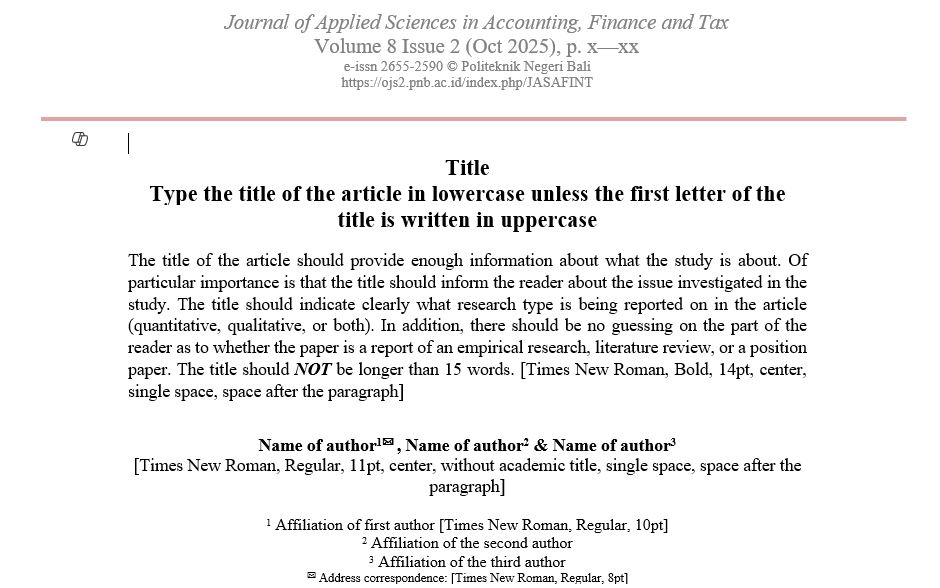CAMEL Ratio as an Indicator of Financial Distress Altman Z-Score Model with Company Size as a Moderating Variable
DOI:
https://doi.org/10.31940/jasafint.v5i2.95-104Keywords:
capital adequacy, profitability, asset quality, financial distress, firm sizeAbstract
The CAMEL ratio is one of the analytical tools to predict bankruptcy in a bank or what is commonly referred to as financial distress. The condition of financial distress is influenced by many factors, one of which is the size of the firm. This study examines the effect of the three components in the CAMEL ratio, namely capital adequacy, profitability, and asset quality on financial distress. Firm size will be used as a variable that moderates the relationship between the three components in the CAMEL ratio to financial distress. The method used is Moderated Regression Analysis (MRA) with the object of research being banks listed on the Indonesia Stock Exchange from 2016 to 2020. The results of this study prove that capital adequacy and profitability have a negative effect on financial distress, while asset quality has no effect. to financial distress. Firm size is able to moderate the relationship between capital adequacy and profitability with financial distress, but is unable to moderate the relationship between asset quality and financial distress.







